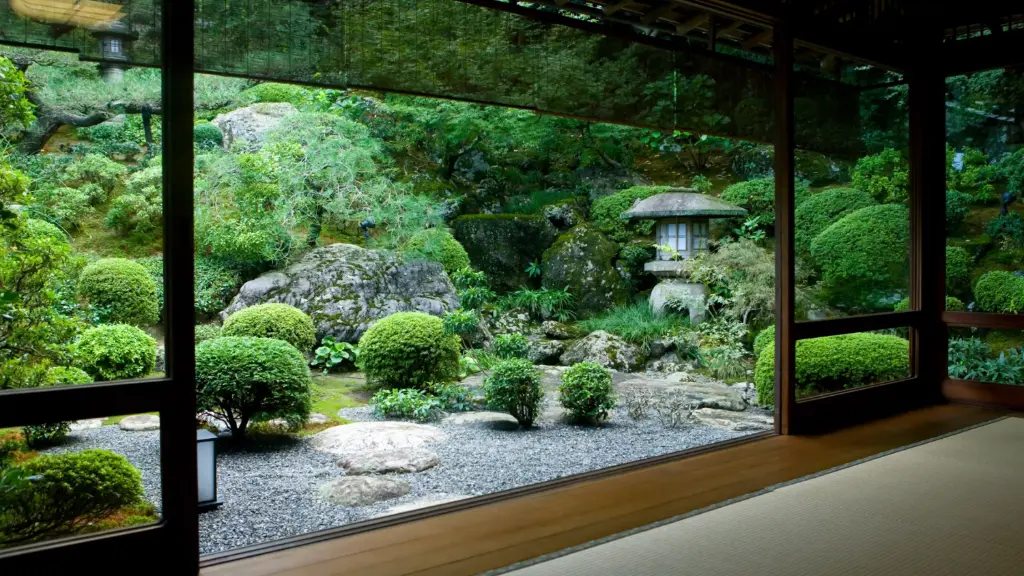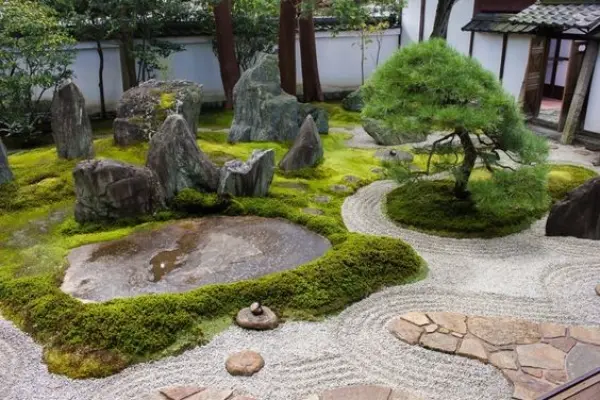
In a fast-paced world filled with noise and distractions, creating a serene sanctuary where one can find peace and tranquility is more important than ever. Enter the Zen Garden, a harmonious space designed to evoke a sense of calmness and mindfulness through the careful arrangement of sand, rocks, and bamboo plants. In this comprehensive guide, we will explore the principles of Zen garden design, from selecting the perfect location to choosing the right elements and maintaining your sanctuary for years to come.
Understanding Zen Garden Philosophy
Originating in Japan, Zen gardens, also known as «karesansui,» meaning «dry landscape,» are inspired by the principles of Zen Buddhism and traditional Japanese aesthetics. These minimalist gardens aim to create a sense of harmony, balance, and tranquility through simplicity and mindful contemplation.
Key Elements of Zen Garden Philosophy:
- Simplicity: Zen gardens embrace minimalism, with clean lines and uncluttered spaces that allow the mind to rest and focus.
- Natural Elements: Incorporating natural materials such as sand, rocks, and plants connects the garden to the surrounding landscape and encourages a sense of unity with nature.
- Symbolism: Every element in a Zen garden carries symbolic meaning, from the raked patterns in the sand representing ripples in the water to the carefully placed rocks symbolizing islands or mountains.
- Mindfulness: Zen gardens are designed to encourage mindfulness and meditation, providing a peaceful retreat from the chaos of everyday life.
Choosing the Perfect Location
Before embarking on your Zen garden journey, it’s essential to select the ideal location for your sanctuary. Consider the following factors when choosing a spot for your Zen garden:
Location Considerations:
- Accessibility: Choose a location that is easily accessible and visible from your home or favorite relaxation spot to ensure you’ll enjoy your garden regularly.
- Sunlight: Most Zen garden elements, such as bamboo plants, thrive in partial to full sunlight, so select a spot that receives adequate sunlight throughout the day.
- Privacy: Aim for a quiet and secluded area where you can immerse yourself in meditation and contemplation without distractions from the outside world.
- Terrain: While Zen gardens can be created on flat ground, consider incorporating natural slopes or contours into your design to add visual interest and depth.
Designing Your Zen Garden
Once you’ve chosen the perfect location, it’s time to design your Zen garden. Follow these steps to create a tranquil sanctuary that reflects your unique style and personality:
1. Define the Space:

Begin by outlining the boundaries of your Zen garden using rocks, wooden borders, or low hedges. This will create a sense of enclosure and separation from the surrounding environment.
2. Lay the Foundation:
Cover the ground with a layer of fine gravel or sand to create a smooth and uniform surface. Rake the surface in a pattern of your choosing, such as concentric circles or straight lines, to represent flowing water or ripples in a pond.
3. Choose Your Elements:
Select the key elements of your Zen garden, including rocks, stones, and bamboo plants. Arrange these elements thoughtfully, keeping in mind principles of balance and asymmetry.
4. Incorporate Water Features:
If space allows, consider adding a small water feature such as a stone fountain or basin to enhance the sense of tranquility and provide auditory stimulation.
Maintaining Your Zen Garden
Keeping your Zen garden well-maintained is essential to preserving its beauty and serenity over time. Follow these tips to ensure your sanctuary remains a peaceful retreat:
Best Plants for Zen Gardens
- Bamboo: Symbolizes flexibility and resilience. Plant bamboo along the edges or in containers.
- Moss: Thrives in shaded areas. Its lush green color adds softness to the landscape.
- Japanese Maples: These small trees provide beautiful foliage and can be pruned to maintain a balanced shape.
Building Your Zen Garden
- Clear the Area: Remove weeds, rocks, and debris. Level the ground if needed.
- Lay Gravel or Sand: Create the base layer using fine gravel or sand. Rake it into patterns to represent water flow.
- Place Rocks: Position rocks strategically. Use odd numbers (3, 5, or 7) for balance.
- Add Plants: Introduce bamboo, moss, and other selected plants. Keep planting minimal.
- Water Feature: Install a small water basin or fountain. Surround it with pebbles.
- Stepping Stones: Lay natural stone stepping stones along the pathway.
Maintenance Tips:
- Regular Raking: Rake the sand or gravel surface regularly to maintain its smooth appearance and clear away debris or footprints.
- Prune Bamboo Plants: Trim overgrown branches and foliage from your bamboo plants to promote healthy growth and maintain their graceful appearance.
- Weed Control: Keep weeds and unwanted vegetation at bay by regularly inspecting your garden and removing any intruders promptly.
- Watering: Ensure that your bamboo plants and any other vegetation receive adequate water, especially during hot and dry periods, to prevent wilting or dehydration.
In conclusion, designing a Zen garden offers a transformative journey into the realm of tranquility and mindfulness. By embracing the principles of simplicity, natural beauty, and mindfulness, you can create a serene sanctuary that nourishes the soul and soothes the mind. Whether you’re seeking a peaceful retreat for meditation and contemplation or simply a harmonious space to unwind after a long day, a Zen garden offers a timeless escape from the chaos of modern life.
Enjoy Your Zen Garden
Take time to sit, observe, and meditate in your Zen garden. Let its simplicity and harmony bring peace to your mind and soul. 🌿🕊️
For more inspiration and detailed instructions, explore additional Zen garden ideas. Happy designing! 🌸



